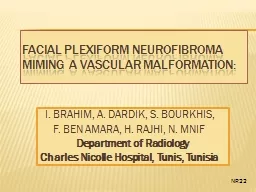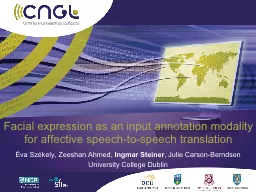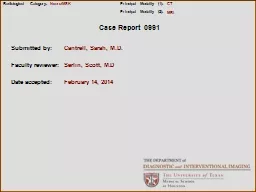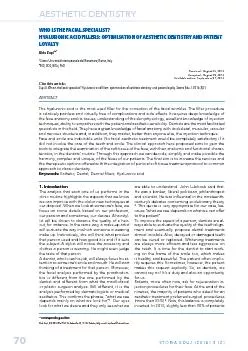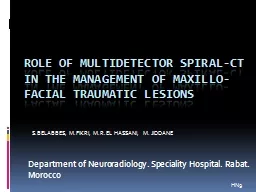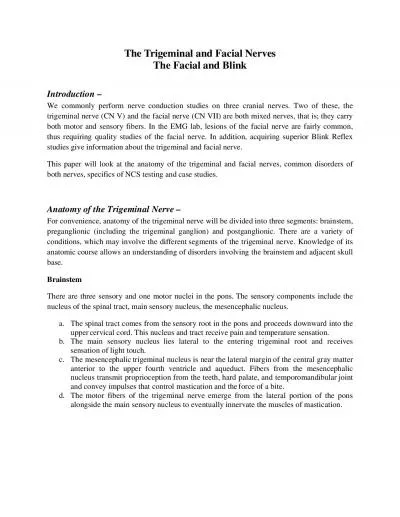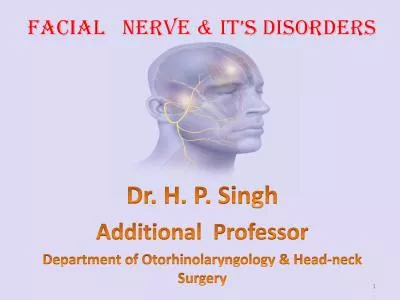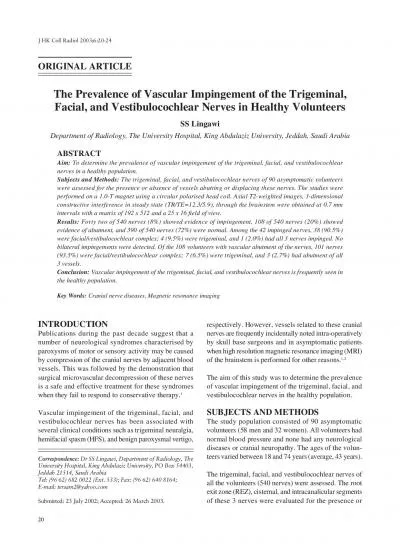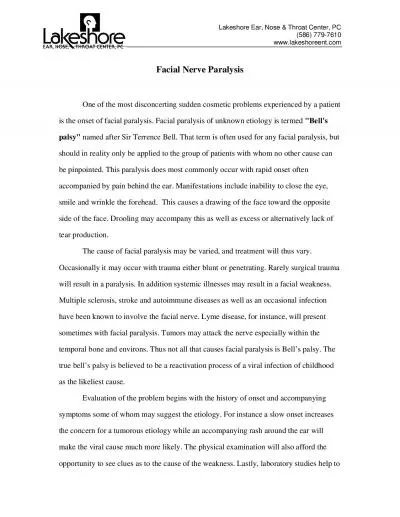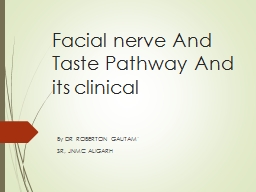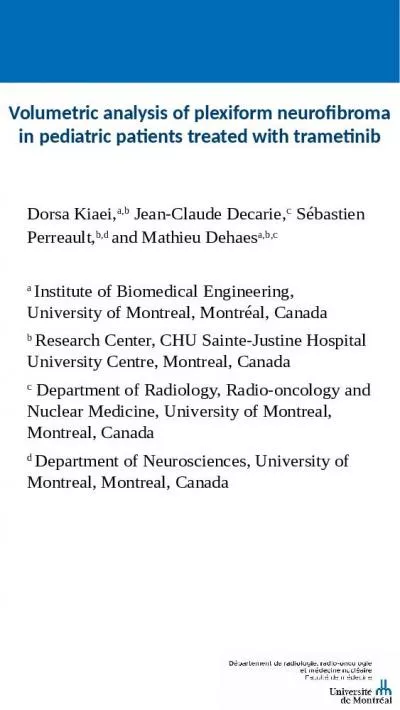PPT-FACIAL PLEXIFORM NEUROFIBROMA MIMING A VASCULAR MALFORMATIO
Author : phoebe-click | Published Date : 2016-05-27
I BRAHIM A DARDIK S BOURKHIS F BEN AMARA H RAJHI N MNIF Department of Radiology Charles Nicolle Hospital Tunis Tunisia NR22 Describe the clinical and imaging
Presentation Embed Code
Download Presentation
Download Presentation The PPT/PDF document "FACIAL PLEXIFORM NEUROFIBROMA MIMING A V..." is the property of its rightful owner. Permission is granted to download and print the materials on this website for personal, non-commercial use only, and to display it on your personal computer provided you do not modify the materials and that you retain all copyright notices contained in the materials. By downloading content from our website, you accept the terms of this agreement.
FACIAL PLEXIFORM NEUROFIBROMA MIMING A VASCULAR MALFORMATIO: Transcript
Download Rules Of Document
"FACIAL PLEXIFORM NEUROFIBROMA MIMING A VASCULAR MALFORMATIO"The content belongs to its owner. You may download and print it for personal use, without modification, and keep all copyright notices. By downloading, you agree to these terms.
Related Documents

